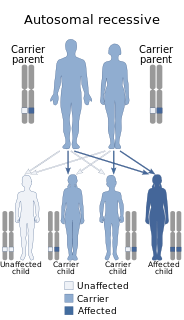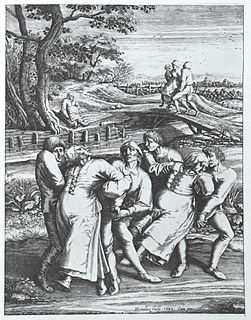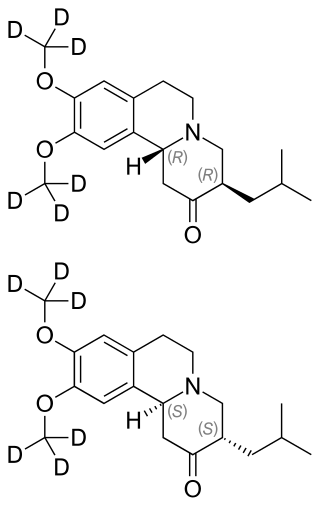
Huntington's disease (HD), also known as Huntington's chorea, is a neurodegenerative disease that is mostly inherited. The earliest symptoms are often subtle problems with mood or mental abilities. A general lack of coordination and an unsteady gait often follow. As the disease advances, uncoordinated, involuntary body movements known as chorea become more apparent. Physical abilities gradually worsen until coordinated movement becomes difficult and the person is unable to talk. Mental abilities generally decline into dementia. The specific symptoms vary somewhat between people. Symptoms usually begin between 30 and 50 years of age but can start at any age. The disease may develop earlier in life in each successive generation. About eight percent of cases start before the age of 20 years, and are known as juvenile HD, which typically present with the slow movement symptoms of Parkinson's disease rather than those of chorea.

Choreography is the art or practice of designing sequences of movements of physical bodies in which motion, form, or both are specified. Choreography may also refer to the design itself. A choreographer is one who creates choreographies by practicing the art of choreography, a process known as choreographing. Choreography is used in a variety of fields, including ballet, opera, musical theater, cheerleading, cinematography, gymnastics, fashion shows, ice skating, marching band, show choir, theatre, synchronized swimming, cardistry, video game production, and animated art. In the performing arts, choreography applies to human movement and form. In dance, choreography is also known as dance choreography or dance composition.

The horovod or khorovod is an East Slavic and pagan art form and one of the oldest dances of Russia with its more than 1000 years history. It is a combination of a circle dance and chorus singing, similar to the choreia of ancient Greece. The dance was also known in Russia as karagod, tanok and krug.
Chorea is an abnormal involuntary movement disorder, one of a group of neurological disorders called dyskinesias. The term chorea is derived from the Ancient Greek: χορεία, as the quick movements of the feet or hands are comparable to dancing.
Choreia is a circle dance accompanied by singing, in ancient Greece. Homer refers to this dance in his epic poem, the Iliad.

Chorea-acanthocytosis, is a rare hereditary disease caused by a mutation in a gene that directs structural proteins in red blood cells. It belongs to a group of four diseases characterized under the name neuroacanthocytosis. When a patient's blood is viewed under a microscope, some of the red blood cells appear thorny. These thorny cells are called acanthocytes.
Sydenham's chorea, also known as chorea minor and historically and occasionally referred to as St Vitus' dance, is a disorder characterized by rapid, uncoordinated jerking movements primarily affecting the face, hands and feet. Sydenham's chorea results from childhood infection with Group A beta-haemolytic Streptococcus and is reported to occur in 20–30% of people with acute rheumatic fever. The disease is usually latent, occurring up to 6 months after the acute infection, but may occasionally be the presenting symptom of rheumatic fever. Sydenham's chorea is more common in females than males and most below 16 years of age. Adult onset of Sydenham's chorea is comparatively rare, and the majority of the adult cases are associated with exacerbation of chorea following childhood Sydenham's chorea.

Tetrabenazine is a drug for the symptomatic treatment of hyperkinetic movement disorders. It is sold under the brand names Nitoman and Xenazine among others. On August 15, 2008, the U.S. Food and Drug Administration approved the use of tetrabenazine to treat chorea associated with Huntington's disease. Although other drugs had been used "off label," tetrabenazine was the first approved treatment for Huntington's disease in the U.S. The compound has been known since the 1950s.
Korea is a region in East Asia consisting of the Korean Peninsula and nearby islands that is politically divided between:
Neuroacanthocytosis is a label applied to several genetic neurological conditions in which the blood contains misshapen, spiculated red blood cells called acanthocytes.
Tourettism refers to the presence of Tourette-like symptoms in the absence of Tourette syndrome, as the result of other diseases or conditions, known as "secondary causes".

The lenticular fasciculus is a tract connecting the globus pallidus (internus) to the thalamus and is a part of the thalamic fasciculus. It is synonymous with field H2 of Forel. The thalamic fasciculus (composed of both the lenticular fasciculus and ansa lenticularis) runs to the thalamus. Basically, it is part of a pathway that connects the globus pallidus and the thalamus.
Chorea gravidarum is a rare type of chorea which presents with involuntary abnormal movement, characterized by abrupt, brief, nonrhythmic, nonrepetitive movement of any limb, often associated with nonpatterned facial grimaces. It is a complication of pregnancy which can be associated with eclampsia and its effects upon the basal ganglia. It is not a causal or pathologically distinct entity but a generic term for chorea of any cause starting during pregnancy. It is associated with history of Sydenham's chorea. It mostly occurs in young patients; the average age is 22 years.

The dancing plagueof 1518 was a case of dancing mania that occurred in Strasbourg, Alsace, in the Holy Roman Empire in July 1518. Somewhere between 50 and 400 people took to dancing for days.
Saint Vitus' dance, named after Saint Vitus, may refer to:
Benign hereditary chorea (BHC), also known as benign familial chorea, is a rare autosomal dominant neurogenetic syndrome. It typically presents in childhood with isolated chorea, with or without dull normal intelligence. Unlike other neurogenetic causes of chorea such as Huntington's disease, BHC is not progressive, and not associated with cognitive decline or psychiatric problems in the vast majority of cases.

Deutetrabenazine is a vesicular monoamine transporter 2 inhibitor which is used for the treatment of chorea associated with Huntington’s disease and tardive dyskinesia.







